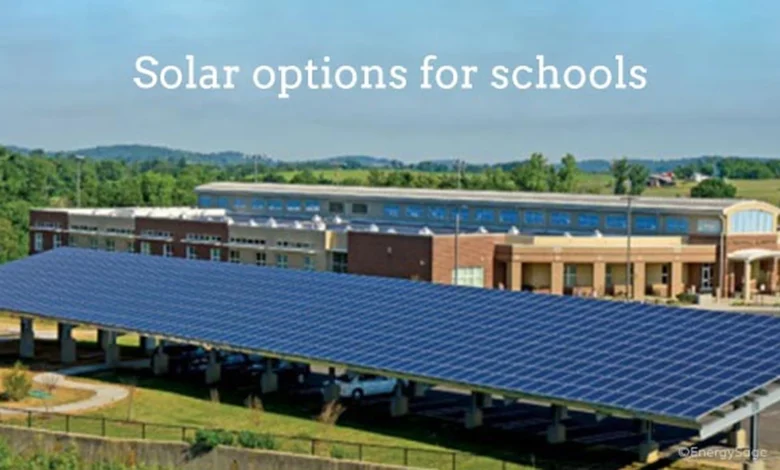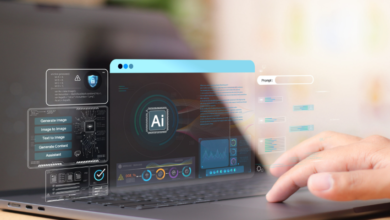How Schools and Colleges Can Use Solar Energy to Reduce Costs

Educational institutions across the globe are facing increasing financial pressures. Rising utility bills, infrastructure maintenance, and operational costs are pushing schools and colleges to look for more sustainable and cost-efficient solutions. One of the most promising options today is solar energy.
Harnessing the power of the sun through solar panel installations can significantly cut electricity costs, promote environmental responsibility, and even provide hands-on learning opportunities for students. This article explores how schools and colleges can benefit from solar energy, reduce costs, and contribute to a greener future.
Why Solar Energy is Ideal for Educational Institutions
1. High Energy Consumption = High Savings Potential
Schools and colleges typically operate during daylight hours, aligning perfectly with peak solar generation times. Classrooms, labs, libraries, and administrative offices all consume large amounts of electricity throughout the day. By switching to solar, institutions can offset much of this consumption.
See examples of solceller på tag projects
2. Large Rooftop and Open Space Availability
Most schools and colleges have large rooftops or open grounds that are ideal for solar panel installation. These areas are usually underutilized but can become valuable assets when equipped with photovoltaic (PV) systems.
3. Long-Term Financial Planning
Educational institutions often think in terms of decades. Typically have a lifespan of 25–30 years, offering long-term savings and energy independence. Once the initial installation cost is recovered (usually in 5–7 years), the energy generated is virtually free.
Financial Benefits of Solar Energy for Schools and Colleges
1. Reduction in Electricity Bills
This is the most immediate and visible benefit. Solar installations can reduce electricity bills by 40–80%, depending on the system size, location, and energy usage patterns.
Example:
A college spending $5,000/month on electricity could save over $3,000/month after installing a sufficient solar system. Over a year, this could mean savings of $36,000+.
2. Government Incentives and Grants
Many countries offer subsidies, tax credits, and grants to encourage solar adoption. For example:
- United States: The Investment Tax Credit (ITC) allows for up to 30% savings on installation costs.
- India: Government-backed subsidies for schools switching to solar.
- Pakistan: Net metering and zero-interest financing options are becoming more common.
3. Net Metering for Revenue Generation
With net metering, excess solar energy produced during weekends or holidays can be fed back into the grid. Schools and colleges can earn credits or payments for this energy, further reducing operational costs.
Environmental Benefits of Going Solar
Apart from saving money, solar energy contributes to environmental sustainability.
- Reduces Carbon Footprint: A medium-sized institution can reduce CO₂ emissions by several tons annually.
- Promotes Green Campus Initiatives: Adopting solar technology supports the institution’s sustainability goals.
- Inspires Students: Using clean energy sends a strong message about environmental responsibility and climate action.
Educational and Community Engagement Opportunities
1. Real-Life Learning Laboratory
Schools and colleges can integrate solar systems into their curriculum:
- Physics and Environmental Science students can study energy generation in real-time.
- Data from solar panels can be used for math and statistics lessons.
- Engineering and tech students can analyze system performance and maintenance.
Read Also: How to Secure and Protect Your Business Domain Online
2. Student-Led Solar Projects
Many institutions have launched student-driven initiatives such as:
- Solar-powered charging stations
- Solar gardens on campus
- Awareness campaigns about renewable energy
These initiatives build leadership, innovation, and teamwork skills.
3. Community Awareness and Leadership
Institutions using solar energy serve as role models for local communities. Parents, local businesses, and municipalities may be inspired to explore renewable options after seeing a successful school solar project.
Get more info about solee here
Steps to Implement Solar Energy in Educational Institutions
1. Energy Audit and Feasibility Study
Before installing solar panels, schools should:
- Conduct an energy audit to understand current electricity usage.
- Assess rooftop or ground space for solar panel placement.
- Calculate potential savings and ROI using professional consultants.
2. Budgeting and Financing Options
Options to finance a solar system include:
- Upfront capital investment (self-funded)
- Power Purchase Agreements (PPA): A third-party installs and maintains the system; the school pays for electricity at reduced rates.
- Leasing options: Monthly lease payments instead of purchasing outright.
- Grants and crowdfunding: Many institutions raise funds from alumni or NGOs.
3. Choosing the Right Solar Partner
Partner with a trusted solar installation company that:
- Specializes in institutional projects
- Offers warranties and maintenance services
- Has relevant certifications and positive reviews
4. Installation and Grid Connection
Once permits and financing are in place, installation can take a few weeks to a few months. After that, the system is connected to the utility grid for net metering (if available).
Case Studies: Successful Solar Adoption in Schools and Colleges
Case Study 1: California Public Schools
In the U.S., over 5,000 schools have installed solar panels. Some districts save over $1 million annually, which is redirected into educational programs and teacher salaries.
Case Study 2: Delhi University, India
The university installed a 2.5 MW solar system, powering its hostels, classrooms, and labs. It reduced electricity bills by 60% and serves as a research platform for renewable energy students.
Case Study 3: Beaconhouse School System, Pakistan
Some campuses in Karachi and Lahore have adopted solar energy, benefiting from reduced costs and uninterrupted power during grid failures — especially important in load-shedding areas.
Challenges in Adopting Solar Energy in Educational Institutions
Despite the benefits, there are a few challenges:
1. High Initial Investment
Although long-term savings are substantial, the upfront cost of solar installation can be a hurdle. This can be mitigated through leasing, PPAs, or government subsidies.
2. Lack of Awareness
School administrators may not be fully aware of the financial and educational benefits of solar energy, making them hesitant to invest.
3. Maintenance and Monitoring
Solar panels require periodic cleaning and technical maintenance, especially in areas with dust or pollution. However, most providers offer long-term maintenance contracts.
Future of Solar in Education: What’s Next?
The global shift toward clean energy will only intensify in the coming years. As solar panel technology becomes more efficient and affordable, and storage solutions (like batteries) become more accessible, even small schools in remote areas will be able to benefit.
In the future, solar-powered smart campuses with integrated energy management systems, real-time data dashboards, and AI-powered efficiency tools may become the norm.
Conclusion: A Smarter, Greener Choice for Education
Switching to solar energy is more than just an economic decision for schools and colleges — it’s a commitment to sustainability, innovation, and leadership. By investing in solar, educational institutions can not only reduce operational costs but also enhance their educational offerings, promote environmental awareness, and inspire the next generation of climate-conscious citizens.
If you’re part of a school or college management team, now is the time to consider how solar power can fit into your future.
FAQs: Solar Energy in Schools and Colleges
Q1: How much can schools save by switching to solar?
Answer: Depending on the system size and energy usage, schools can save 40–80% on their electricity bills annually.
Q2: Is solar energy reliable for educational institutions?
Answer: Yes, especially because schools operate mostly during the day when solar generation is at its peak. Backup systems or net metering can cover non-sunny hours.
Q3: Are there grants or subsidies available?
Answer: Many governments offer tax incentives, grants, and subsidies to promote solar adoption in educational institutions.
Q4: Do solar panels work during power outages?
Answer: Grid-tied systems usually shut down during outages for safety, but schools can add battery storage or hybrid systems for backup.
Q5: What is the lifespan of a school solar system?
Answer: Most solar panels come with 25–30 years of warranty, making them a long-term solution for energy savings.




